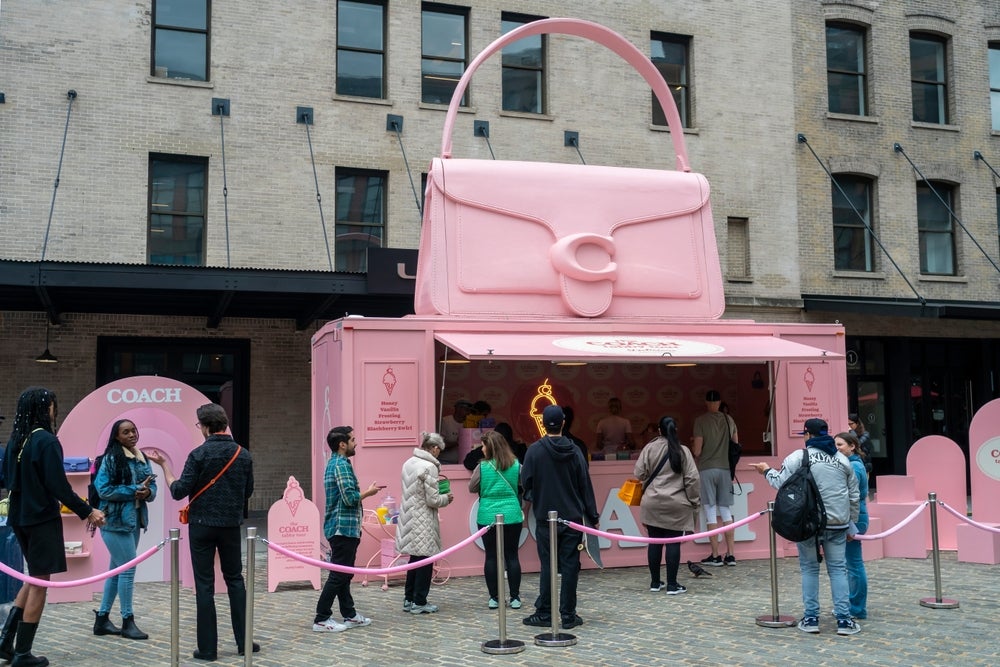
The economic and personal impact of the Covid-19 global pandemic, and the protectionist trade policy agenda in the US are the biggest concerns facing today’s US fashion industry executives. Unsurprisingly, they are contributing to a more conservative outlook for the future.
The annual snapshot of sourcing sentiment is revealed today (4 August) in the ‘2020 Fashion Industry Benchmarking Study’ published by the United States Fashion Industry Association (USFIA).
The seventh such survey of executives from leading US fashion brands, retailers, importers, and wholesalers – including some of the largest brands and retailers in the country – shows the lowest level of confidence in the five year outlook, and the highest number of respondents who are pessimistic.
Those who feel optimistic or somewhat optimistic about the next five years swiftly fell from 65.3% in 2019 to a new low of 57.9%. In comparison, nearly one-third of respondents hold a pessimistic or somewhat pessimistic view about the future of the fashion industry, the highest since the survey was launched in 2014.
The job market appears to be the sole positive aspect of the US fashion industry during the pandemic. Nearly 90% of respondents still plan to increase hiring in the next five years, which is similar to the results last year and much higher than around 80% during 2014- 2017.
How well do you really know your competitors?
Access the most comprehensive Company Profiles on the market, powered by GlobalData. Save hours of research. Gain competitive edge.

Thank you!
Your download email will arrive shortly
Not ready to buy yet? Download a free sample
We are confident about the unique quality of our Company Profiles. However, we want you to make the most beneficial decision for your business, so we offer a free sample that you can download by submitting the below form
By GlobalDataSee Also:
Pandemic impact
The coronavirus pandemic topped the list of concerns for business executives this year, with as much as 54% of respondents rating it as their first or second challenge, far exceeding the concerns for other topics on the list.
According to data from the US Bureau of Economic Analysis, the value of US Gross Domestic Product (GDP) decreased at an annual rate of 4.8% in the first quarter of 2020.
Clothing retail sales in the US shrank by over 40.8% in the first five months of 2020 compared with a year ago, while US apparel imports were down by 27.8% year-on-year from January to May 2020 – a worse performance than during the 2008-2009 global financial crisis.
Several other recent studies, including from the United Nations Conference on Trade and Development (UNCTAD) and the International Labor Organization (ILO), also suggest Covid-19 could be the most severe threat to the world economy since the 1930’s great depression, and fashion apparel is one of the sectors that have been hit the hardest.
Despite this uncertainty, more than half (57%) of respondents say they are optimistic or somewhat optimistic.
“I see that number as a reflection of the confidence among sourcing executives that we can navigate these difficult times and remain connected with our customers,” says USFIA president Julia Hughes.
“A major contribution to this confidence in the long-term outlook for the fashion industry remains the essential partnerships between brands, retailers and suppliers around the world. The current global crises highlights something that we have talked about for years – the need for real partnerships throughout the supply chain.
“Every fashion company is faced with supply chain disruptions. Many companies have restructured, or are in the process of restructuring. And of course many well-loved brands and retailers are working through bankruptcy. Manufacturers around the world face the same issues and disruptions. So it is more important than ever for fashion companies to work with their suppliers to meet the key sourcing goals of speed-to-market, flexibility and agility, sourcing cost control and low compliance risks.”
The survey was conducted with 25 executives at leading fashion companies from April to June 2020. In terms of business size, 68% of respondents have more than 1,000 employees. Another 21% of respondents represent medium-sized companies with 101-999 employees, and 11% have less than 100 employees.
All respondents represent companies with headquarters or major management offices in the United States. This year, around 75% of respondents also have headquarters or major management offices outside the US – patterns that reflect the global nature of the fashion business today and the ever-closer connection of the US fashion industry with markets and supply chain partners around the world.
The survey was conducted in conjunction with Dr Sheng Lu, associate professor in the University of Delaware Department of Fashion & Apparel Studies and regular contributor to just-style and the re:source by just-style strategic sourcing tool.
Here are some of the highlights.
Impact of Covid-19 and the escalating US trade war with China on sourcing:
- The “increasing production and sourcing cost” is ranked as the fourth top business challenge facing respondents in 2020. Notably, for the second year in a row, respondents say “shipping and logistics” is their top cost concern in 2020. Further, as high as 90% of respondents explicitly say, the US Section 301 action against China has increased their company’s sourcing cost in 2020, up from 63% last year.
- Covid-19 and the trade war are pushing US fashion companies to reduce their “China exposure” further. While “China plus Vietnam plus Many” remains the most popular sourcing model among respondents, around 29% of respondents indicate that they source more from Vietnam than from China in 2020, up further from 25% in 2019.
- As US fashion companies are sourcing relatively less from China, they are moving orders mostly to China’s competitors in Asia. All respondents say they have “moved some sourcing orders from China to other Asian suppliers” this year, up from 77% in 2019. However, no clear evidence suggests US fashion companies are sourcing more from the Western Hemisphere because of Covid-19 and the US-China trade war.
Companies are not ignoring sustainability despite pandemic pressures:
- Over 70% of respondents say they plan to allocate more resources to sustainability and social compliance through 2022 – higher than 63% in 2019.
- The vast majority of respondents say their company maps the supply chains (i.e., keep records of name, location, and function of suppliers.)
- Respondents identify “suppliers not being fully cooperative or willing to share information,” “the special nature of the textile and apparel industry makes it not practical to gain visibility beyond the 1st tier supplier,” and “insufficient internal budget/staff to map supply chain” as the top challenges for mapping supply chains.
- All respondents say they audit their suppliers. Around 65% of respondents say they use both third-party certification programmes and companies’ in-house compliance team, a notable increase from last year (50%).
Companies will continue to adjust their sourcing bases and practices:
- Sourcing diversification is slowing down, and more US fashion companies are switching to consolidate their existing sourcing base. Close to half of the respondents say they plan to “source from the same number of countries, but work with fewer vendors,” up from 40% last year.
- Companies will continue to adjust their sourcing bases but on a more modest scale than in the past. None of the respondents plan to substantially increase sourcing volume from any particular country or region in the world.
- China most likely will remain a critical sourcing base for US fashion companies. However, non-economic factors, such as the reported forced labor in Xinjiang, could complicate companies’ sourcing decisions.
- Benefiting from US fashion companies’ reduced sourcing from China, Vietnam and Bangladesh are expected to play a more significant role as primary apparel suppliers for the US market.
- Given the supply chain disruptions experienced during the pandemic, US fashion companies are more actively exploring “Made in the USA” sourcing opportunities to improve agility and flexibility and reduce sourcing risks. Around 25% of respondents expect to somewhat increase sourcing locally from the US in the next two years, which is the highest level since 2016.
The US-Mexico-Canada Trade Agreement (USMCA):
- For companies that were already using NAFTA for sourcing, the vast majority (77.8%) say they are “ready to achieve any USMCA benefits immediately,” up more than 31% from 2019.
- Even for respondents who were not using NAFTA or sourcing from the region, about half of them this year say they may “consider North American sourcing in the future” and explore the USMCA benefits.
- Some respondents expressed concerns about the rules of origin changes. These worries seem to concentrate on denim products in particular.
The African Growth and Opportunity Act (AGOA) and sourcing from sub-Saharan African (SSA) countries:
- Close to 37% of respondents say they have been sourcing more textile and apparel from the SSA region since its renewal in 2015, a substantial increase from 27% in 2019.
- More than 40% of respondents say AGOA and its “third-country fabric provision” are critical for their sourcing from the SSA region.
- However, respondents still demonstrate a low level of interest in investing in the SSA region directly. Around 27% say the temporary nature of AGOA and the uncertainty associated with the future of the agreement have discouraged them.








